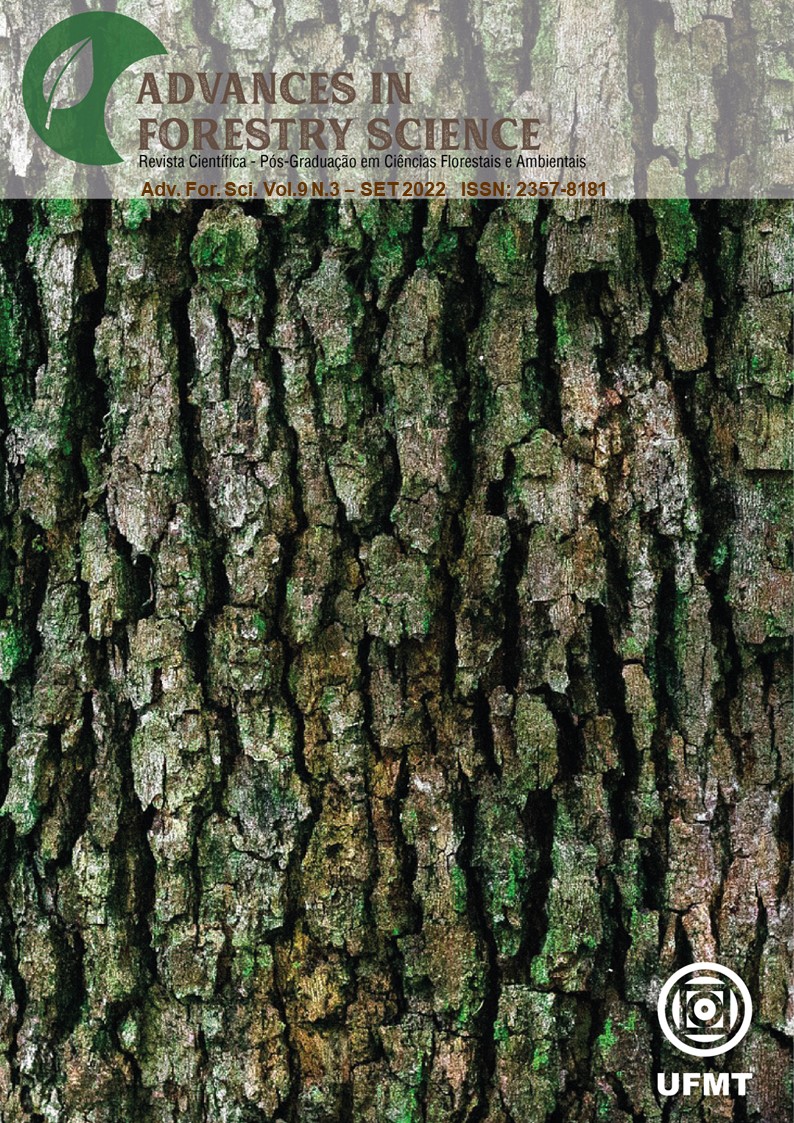Effect of foliar fertilization and soil conditioners on the rooting of a hybrid of Pinus tecunumanii vs. Pinus caribaea var. honduransis
DOI:
https://doi.org/10.34062/afs.v9i3.13338Resumo
As técnicas de produção de mudas via propagação vegetativa, constituem formas alternativas da reprodução sexuada (uso de sementes), no entanto, diversos fatores prejudicam sua utilização de forma abrangente, como por exemplo baixas taxas de enraizamento de algumas espécies. O objetivo desse estudo foi avaliar o efeito de adubos foliares e condicionadores de substrato nas taxas de enraizamento, crescimento e produção de minestacas clonais de híbridos de Pinus tecunumanii vs. caribaea var. hondurensis. Os experimentos foram desenvolvidos em viveiro florestal na cidade de Paranapanema-SP, com delineamento de blocos ao acaso, em arranjo fatorial 4x2. Foram utilizados quatro adubos foliares: AF1 à base de quitosana, AF3 à base de ácido húmico, AF4 extrato de Ascoplhyllum nodosum, e M2AF (mistura de AF1+AF3+AF4, 33,3% de cada) e dois condicionadores de substratos: C1 à base de pescados marinhos; C2 à base de ácidos húmicos. As minestacas foram avaliadas nas fases de casa de vegetação (taxa de enraizamento) e casa de sombra (altura total, massa seca e verde da parte aérea e radicular). O adubo foliar AF4 proporcionou maiores taxas de enraizamento das mudas, juntamente com o adubo AF3 combinado com o condicionador de substrato C2 e o adubo AF1 combinado como condicionador de substrato C2. Em geral, o adubo foliar AF4 promoveu maiores taxas de produção de biomassa vegetal.

